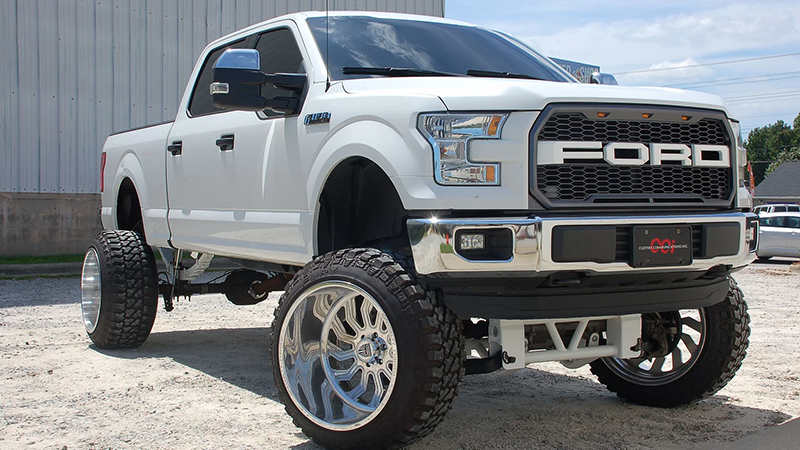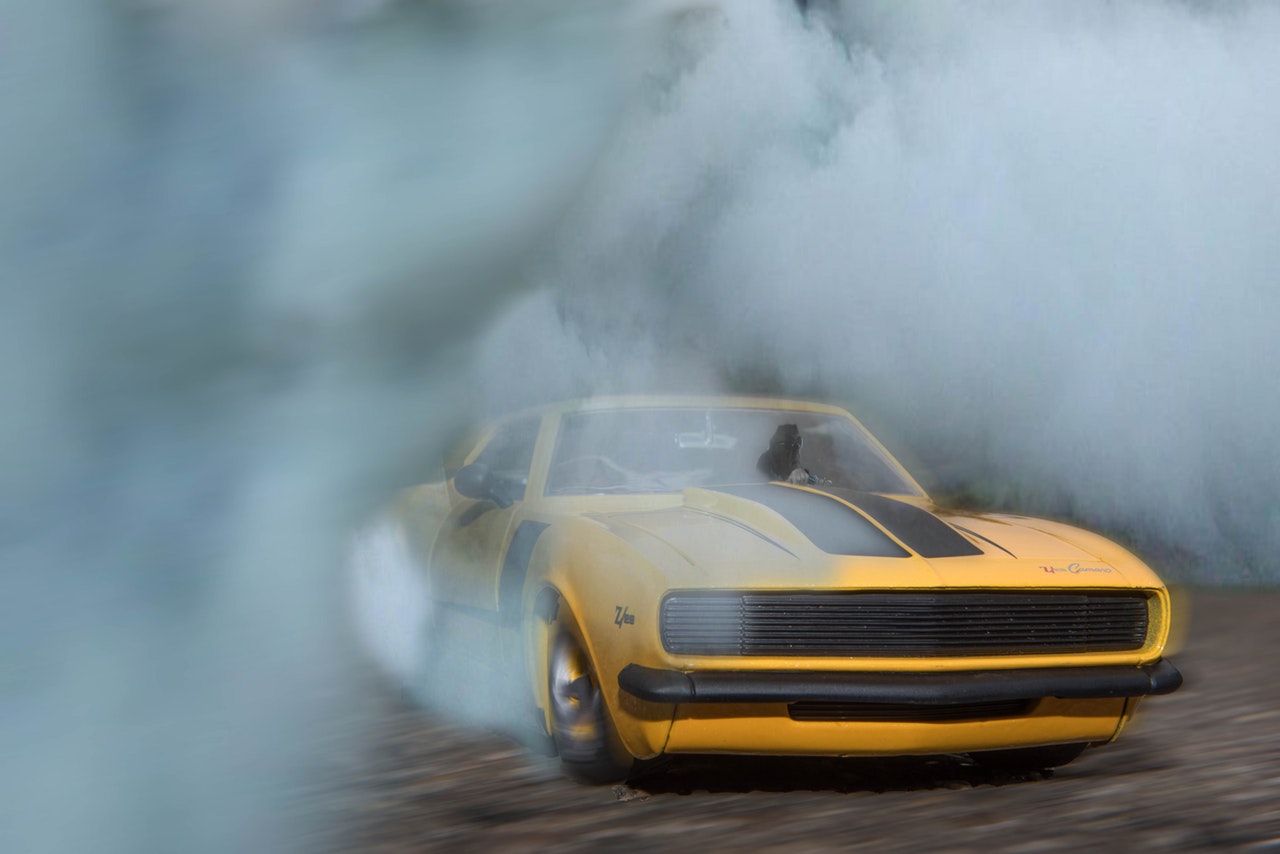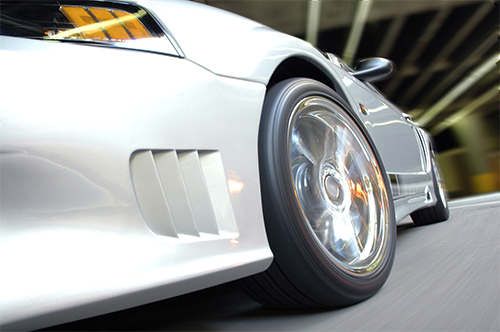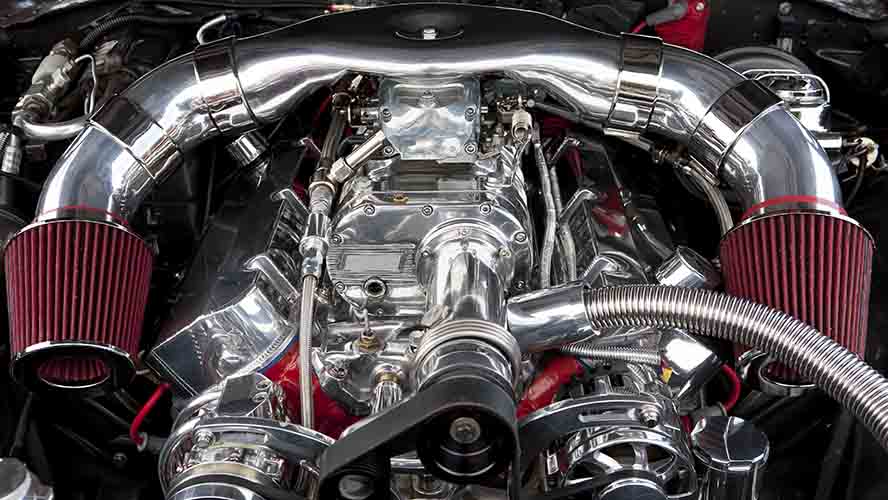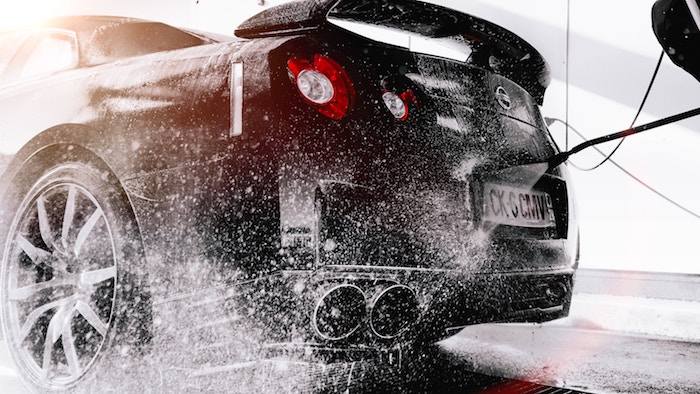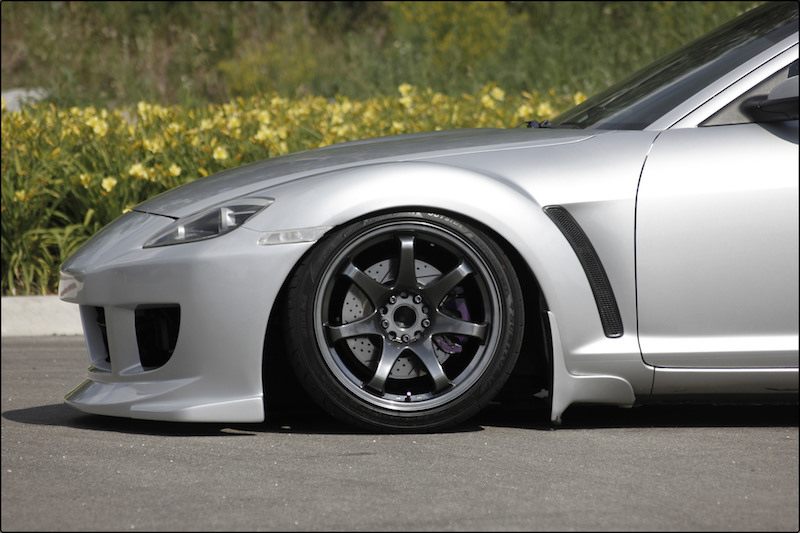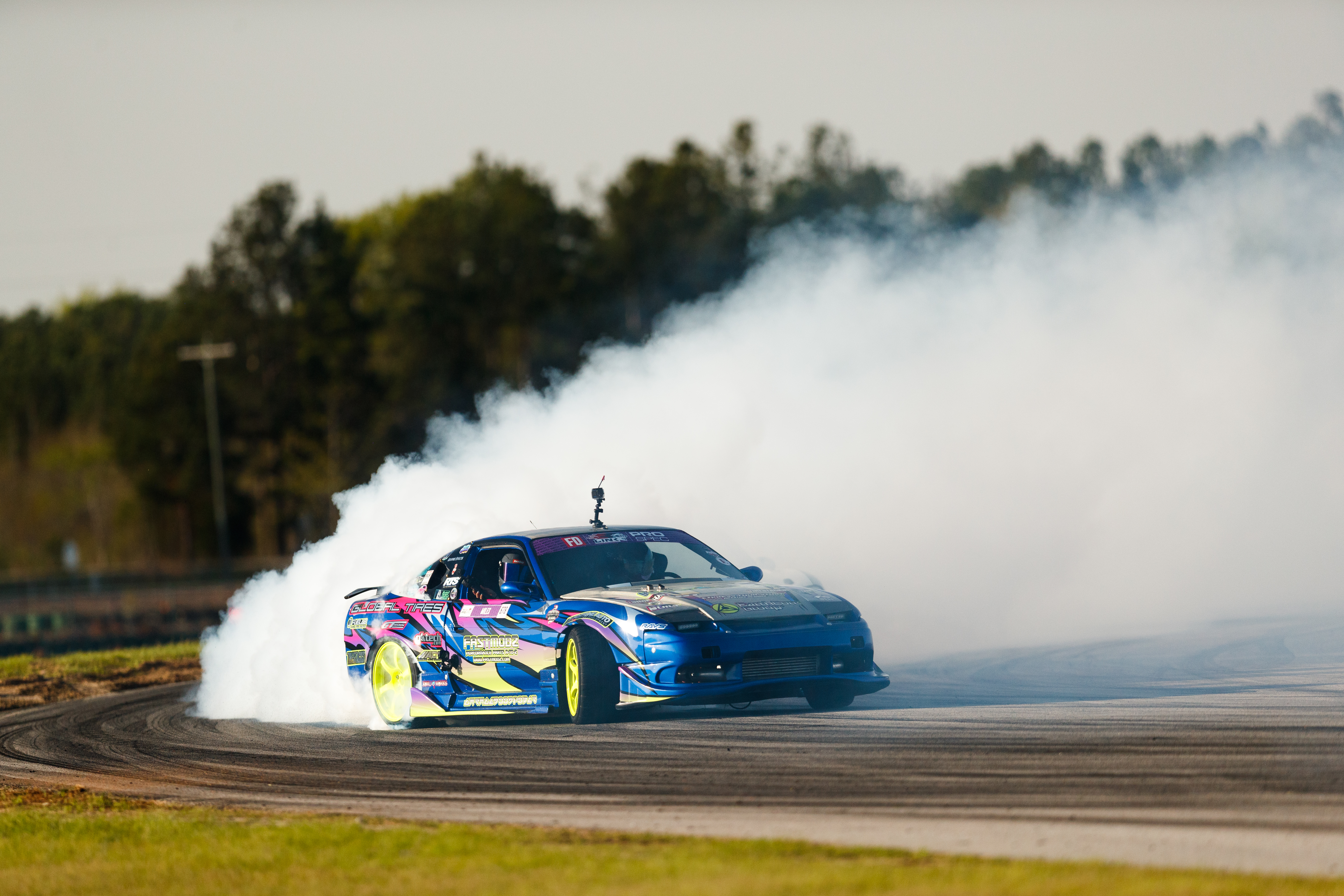Why do we have a love affair with lifted trucks, and why do we raise them up in the first place? It's something that's come a long way from the 80s, when DIY "lift kits" would result in trucks that were pretty good off-road but somewhere between squirrelly and downright treacherous on pavement. It's important to remember that a change in ride height also means a change in steering and suspension geometry, and the more radical the lift, the more there's essentially a re-engineering of these factors.
For some insight, we turned to an expert in the field of lifting trucks — Chris Dye. Chris is the store manager at Super Trucks Plus LLC in North Carolina. He describes it as “probably Raleigh's only full custom shop." Chris and his crew specialize in transforming ordinary vehicles into amazing lifted trucks.
Lifted Ford truck | Super Trucks Plus
Looks and function... or just looks
“Most people lift trucks to achieve a higher ground clearance," Chris explains. They do this to avoid bottoming out or getting stuck when driving off-road, and to allow for the fitment of larger tires.
But Chris also confesses: “A lot of people lift 'em just for looks these days. They'll take a brand-new truck, lift it, and it'll never go off-road." One of the more popular requests Chris gets is for a six-inch lift with 35s, with “35" referring to the tire size. These suspension lift kits can start out at four inches of lift and go all the way to 12 inches, or higher.
Lifting a truck is more involved than it first appears. Other vehicle parts that get involved with suspension lift kits include independent front suspension, shocks versus struts, drop cradles, larger knuckles and steering geometry.
It's also important to remember that with added height comes added driveshaft angles that could increase the risk of unwanted vibration and shortened U-joint life, or even component failure. A longer drive shaft or slip yoke are potential solutions, but nothing beats the professional advice from from an expert experienced with installing lift kits.
Pro Tip: Can't reach your engine compartment anymore? Use a tire step for your work under the hood.
Going (even) higher
Chris goes on to explain that once you max out your lift with suspension lift kits, you can still go higher by choosing a body lift. With a body lift, the vehicle body has to be disconnected from every spot it's mounted to. New spacers are inserted, and then the body is bolted back down to all its connecting points.
As for height, it seems like that's more a matter of personal choice. Chris says the highest he's ever lifted was 26 inches, and that was enough to clear a set of 54s. In his opinion, the maximum comfortable lift he'd recommend for someone's daily driver, as opposed to a show truck, is a 12-inch lift with 40s. “It's all about personal preference. If you're building a show truck, the sky's the limit," Chris adds.
 Lifted Chevy truck | Super Trucks Plus
Lifted Chevy truck | Super Trucks Plus
Get started
Maybe you're not ready to reach for the sky just yet with the heights that a lift delivers. In that case, a leveling kit — as opposed to a lift — might be a better fit. On most stock trucks, the front end sits a few inches lower than the rear. As the name implies, a leveling kit evens out this factory stance.
“Leveling is your most basic kind of lift," Chris explains. “That's going to take most trucks and lift the front up about two inches, so that the front height equals the height of the rear. This will allow you to go up one tire size from factory specs and gives you essentially two inches of lift."
A couple things to know about leveling kits before jumping in — there are three main types, and the kits are vehicle-specific.
- Strut extension – This easy DIY method is also low-cost, making it a strong choice for adding two to three inches of height to the front end simply by adding a spacer on top of the factory strut.
- Coil spacers – Similar to strut extensions, spacers are simply added to the spring and rest between the chassis and spring to produce two to three inches of lift. While they don't affect the spring rate, some coil spacers may require the addition of shock extensions.
- Torsion keys – Also called adjustable keys, levelers, or pork chops. Swapping out the OE torsion keys with different ones is another way to produce lift and alter front-end height. The torsion bar is essentially a spring, but instead of vertically compressing and expanding up and down, it's horizontal — connected to the frame and control arm — and twists to dampen vertical wheel movement after a bump in the road. Replacement keys fit to the torsion bar and alter the vehicle's resting height by changing the bar's performance.
Also consider looking to the leaf springs for some added lift, whether your goal is to just level things out, or for more height. Adding new leaf springs with more arch will deliver some lift, particularly if your OE leaf springs are worn out. As with any lift though, be aware that lift or leveling modifications may require some related changes to driveline, steering and suspension components.
DECIDING WHICH IS RIGHT FOR YOU
Cost is always a consideration when deciding how high to lift because the two rise in unison. According to Chris, the ballpark cost for a six-inch lift on 35s is about $5,000 to $6,000. But, he adds, he's done big lift jobs that total over $20,000. If you're looking for ideas on what others have done with their lifts, Chris recommends Mud Life and Four Wheel & Off-Road, as well as the online forum at Lifted Trucks USA. And, of course, you can always check out some projects that he and Super Trucks Plus have performed.
What do you think? Have you lifted your truck? Leave us a comment.
